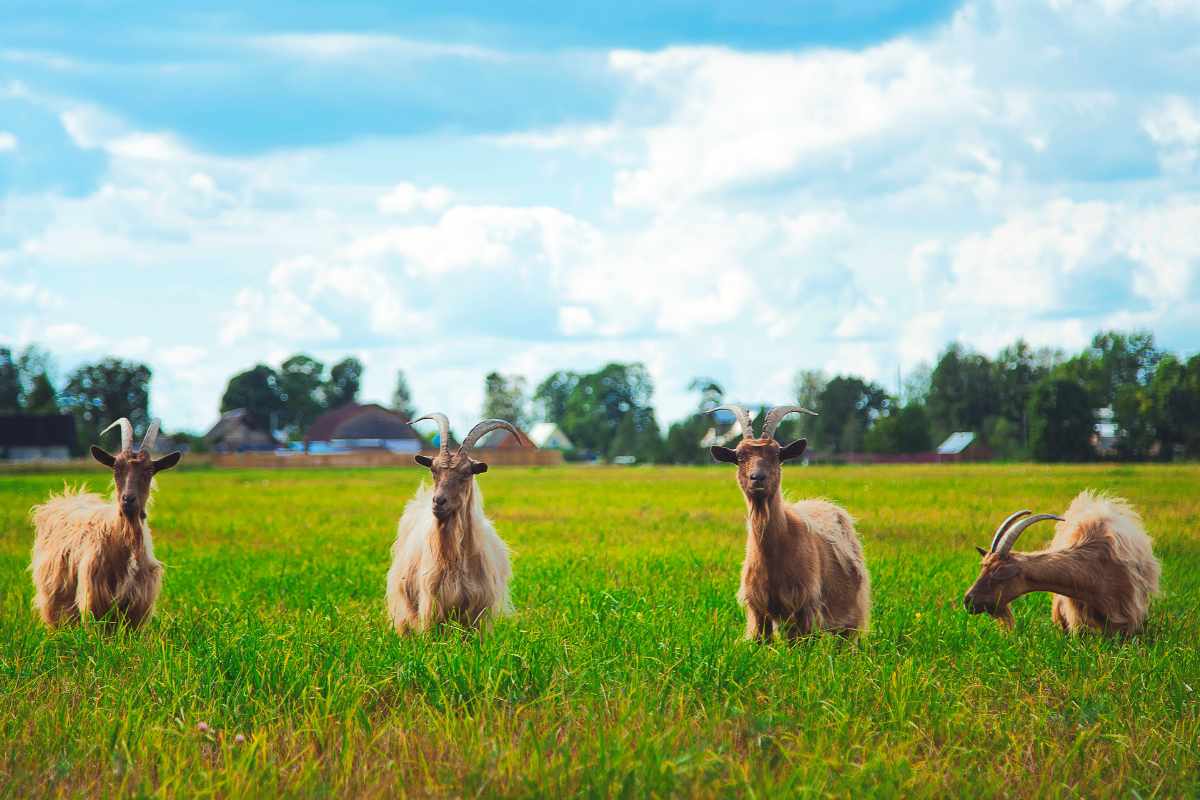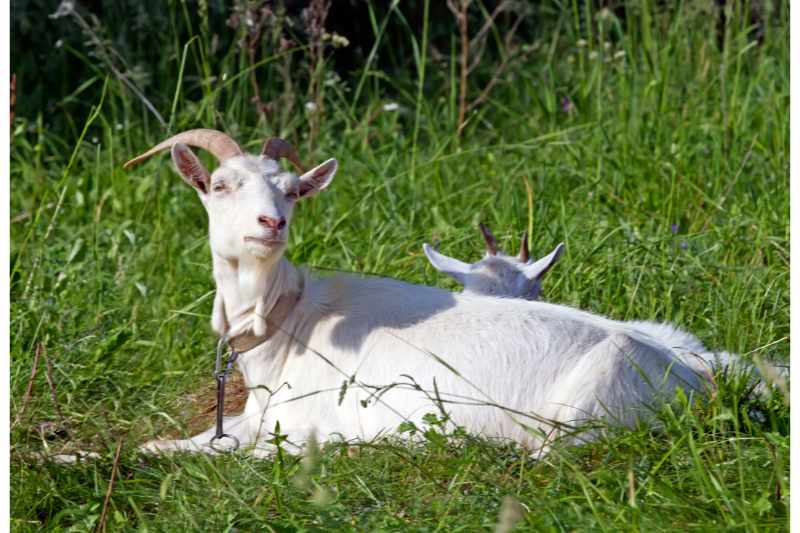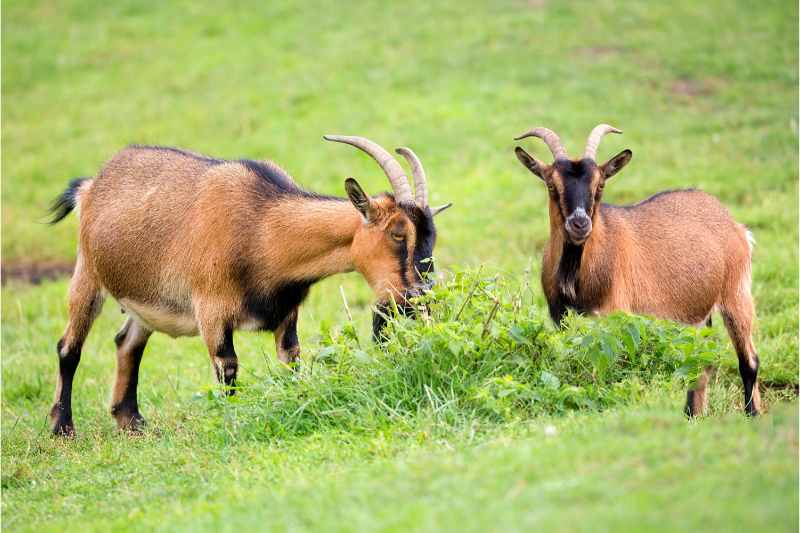
When the Ronald Reagan Presidential Library needed to clear weeds and brush from a hillside, passers-by didn’t hear the sound of lawn mowers or weed whackers. And when the Simi Valley wildfires threatened the area with destruction in October 2019, the buildings and grounds went untouched.
A herd of goats helped firefighters save the Ronald Reagan Presidential Library from the dangerous Easy wildfire by quietly chewing away at the vegetation. No kidding.
Every spring, the library works with the Ventura County Fire Department on wildfire prevention. The Fire Department recruits 805 Goats, a company in Thousand Oaks, Calif., that uses goats as a form of natural land management. Three hundred of the company’s goats were enlisted to graze down the flammable brush. They created a fire break around the hilltop complex.
“It’s an effective way to reduce the vegetation in an eco-friendly way,” explains Scott Morris, owner of 805 Goats. “Contrary to common perception, goats are very quiet as opposed to mechanical methods for reducing brush. They are able to scale terrain that manual labor can’t and effectively reduce vegetation in hard to get to areas.”
Goats Can Stomach It

Goats are a cud-chewing animal — a ruminant. They have a flexible upper lip that allows them to strip leaves from woody plants. Their chewing action leaves fibrous stems and sharp thorns behind. Their system of stomach compartments allows them to regurgitate and chew food a second time until it is soft and digestable. Goats, sheep, and cows are all ruminants, but goats tend to browse plants like brambles, forbs, and fibrous plants, while cows and sheep are grazers, preferring soft grasses like clover.
“Boer goats tend to work best for us,” says Morris. “Goats are the preferred ruminant as they are less picky than sheep and more agile than cattle. “In Southern California where we are, goats are used on hillsides and where the vegetation is heavy with mustard plant and invasive weeds.”

Although goats do most of the work for Don Watson of Wooly Weeders in Napa Valley, he often uses a combination of sheep and goats for chewing down problem areas. “Sheep work on the grassland, and goats browse the brush or chaparral. A combination of the two work best in the range near the Napa and Sonoma Valleys north of San Francisco,” he says. “They consume both flash and ladder fuels, and in so doing take the power out of wildfires. Our first paying customer was Robert Mondavi.”
Goats Not the Best at Lawn-Mowing
These California grazing farm animals aren’t hired for everyday lawn care. Watson says most of his work is now in fire protection and mowing large estates, tight vineyard aisles, and cropland in Napa Valley with flocks, or “mobs” of 500 sheep and goats. The mobs can graze up to 10 acres per day, removing weeds like yellow star thistle (Centaurea solstitialis), spotted knapweed (Centaurea stoebe ssp. micranthos) and squarrose knapweed (Centaurea virgata ssp. squarrosa). Other plants that are yummy to goats or sheep are leafy spurge (Euphorbia esula L.), poison oak (Toxicodendron diversilobum), black mustard plant (Brassica nigra), poison ivy, and blackberry (Rubus allegheniensis). “We move the mob every day to fresh grass, and in so doing, mow, weed and fertilize as we go,” says Watson.
Morris’ goats love ivy and mustard plants. Depending on terrain, weather, and the density of the vegetation, Morris says 200 goats can handle about an acre of overgrown hillside per day. He manages the goats’ progress by containing them behind an electric mesh fence set up within the grazing perimeter. They move the fence as the goats graze down an area.
Benefits of Goats, Sheep as Natural Grazers

Light-footed, goats and sheep don’t destroy the soil. Their pronged hooves promote aeration, and their pelleted droppings fertilize the soil as they wander. (SInce goats are herbivores, their dung doesn’t contain the pathogens found in dog and cat droppings.) On flatter grasslands, the mixture of soil, manure, and straw turn into rich topsoil, explains Watson. “This organic topsoil sponge retains the rain moisture for germinating seed, and nurtures the seedling grass and clover until it is well-rooted and thriving.”
For property owners, goat mowing is a sustainable method of brush and weed management. Goats eat the seed heads and leaves of plants, and strip the stalks of fibrous plants, preventing seeds from spreading and growing in other areas. The animals can move into areas that tractors can’t access. They easily browse in thick brush that is difficult for humans to clear. Power tools cut weeds down to the ground, but they do nothing to stop the seed germination.
The Easy wildfire in Simi Valley consumed more than 1,300 acres of land in less than a day, fed by high winds and overgrown brush. Approximately 7,000 homes were evacuated as the fire blazed, But thanks in part to Morris’ goat crew, the fires missed the Reagan library as well as the graves of late former president Ronald Reagan and his wife Nancy.
We’ll let you chew on that news for a while.
Main Image Credit: Fydorov / Canva Pro / License